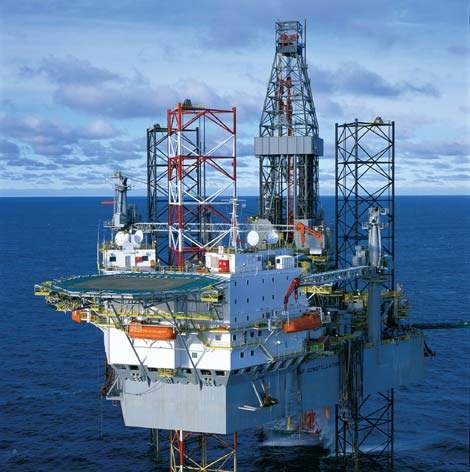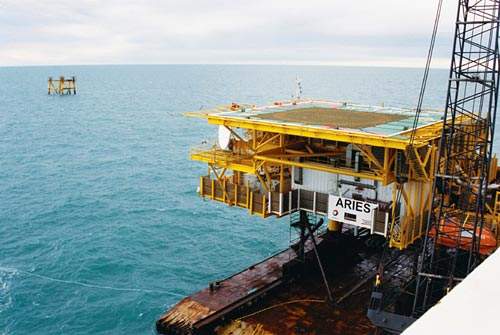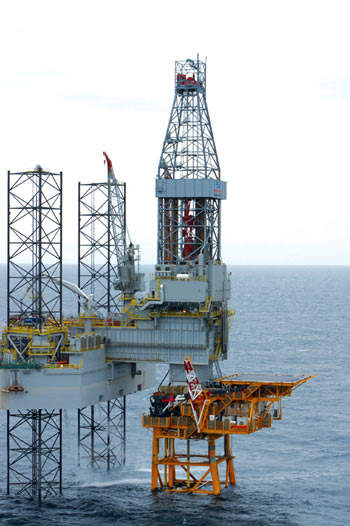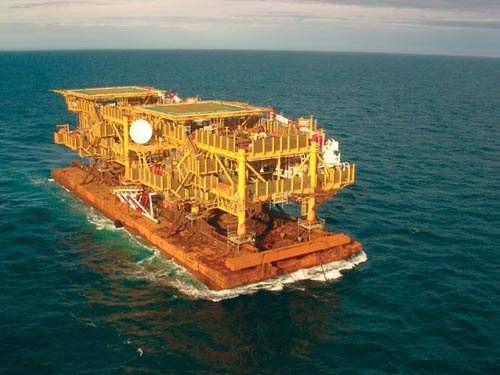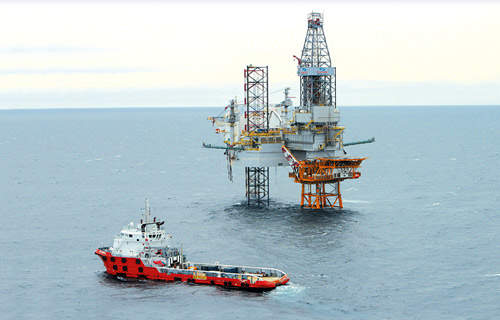The Carina and Aries fields are located in the province Tierra del Fuego, Antártida e Islas del Atlántico Sur in Argentina and lie in the offshore block CMA-1. The project is the biggest offshore natural gas production project in Argentina as well as the world’s most southerly natural gas production facility.
The two fields lie around 30km and 80km off the Tierra del Fuego coast. The development will produce a total of around 56 billion cubic metres of natural gas, 3.4 million tonnes of condensate and 2.4 million tonnes of LPG from the two fields by 2027. The main customers for gas production are primarily major cities and industrial centres.
The development is operated by Total Austral (37.5%) on behalf of Wintershall (37.5%) and Pan American Energy (25%). The three consortium partners have so far invested $440m in the development of the two fields. 1,668 km of 2D seismology and 1,612km² of 3D seismology have been carried out.
Aries and Carina fields
The Aries field was discovered in 1981. It stretches over 12km in length and 4km in width, and the water depth varies between 60m and 80m. Between 1982 and 1995, four test wells were drilled and 2D and 3D seismic explorations were carried out.
The reserves are located in the Hydra and Agro reservoir rocks at a depth of 1,600m. The gas from Aries has an even higher condensate content than that found in Carina.
Carina was discovered in 1983 by the well Carina X1. It stretches over 890km². The water depth is between 80m and 100m. Between 1983 and 1999, 13 test wells were drilled.
The deposits in the main strata of the Springhill formation are located at a depth of approximately 1,000m. The Carina natural gas field is being developed in the initial phase with two horizontal boreholes. Further wells are scheduled for 2013 / 14.
The fields are developed by conventional steel platforms. The jackets were designed in Houston and manufactured in a Louisiana shipyard before being transported to the location. The Carina jacket is a construction 80m in height and 15m in width. The Aries jacket is 76m long and 15m wide. The topsides were produced in the port of Veracruz in Mexico.
Carina infrastructue
A network of pipelines over 100km in length has been installed to connect the wells to the main processing plants located on the coast. The gas, condensates and water are carried through these pipes without prior separation. This obviates the need for processing offshore, and consequently allows for platforms can operate in an unmanned capacity.
At the seabed, the water temperature around the production platforms is approximately 2°C. It is therefore necessary to enrich the unseparated wet gas with monoethylene glycol in order to inhibit hydrates that might form and choke the transport routes.
The 24in-diameter pipeline from the Carina field is around 80km long. It has been designed to withstand a pressure of 96.5 bar, and has a wall thickness of 15mm.
Each pipeline element measures 12m in length and weighs 12t. It has an internal diameter of 60cm. Enclosing this is an outer coating, which offers protection against the corrosion that may occur as a result of immersion in seawater. The Aries pipeline has a diameter of 18in and a length of 21km.
Gas and condensate are transported to Río Cullen on the mainland for processing. Here, the condensate is separated from the gas, stabilised and mixed with oil. It is then loaded onto tankers and marketed as light crude at home and to Chile and Brazil.
Meanwhile, the gas is transported to the Caóadón Alfa processing plant which lies 27km to the north. After processing, it is introduced into the San Martín pipeline, which mainly supplies natural gas to industrial centres as well as major Argentinean cities.
Project timeline
The consortium partners made a field development plan for both deposits in 2001. The contract to develop two natural gas production platforms over the fields and laying of pipeline to connect them with the coast was given to McDermott International in 2001. Installation of the production platforms along with pipelines was completed in 2004.
The fields came onstream in 2005 and started producing in early 2006. The start of operations was delayed due to inefficient transport capacity over the 2,96lm long, 30in diameter San Martin pipeline.

